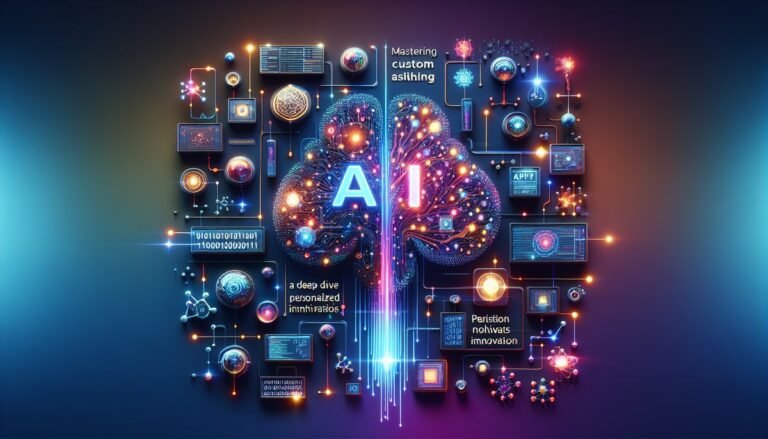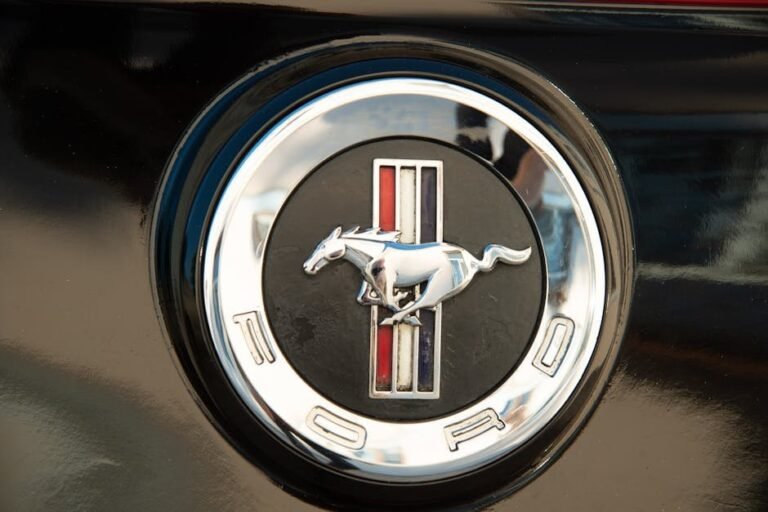The collaboration between OpenAI and Jony Ive in the realm of AI hardware is nothing short of groundbreaking, but as with any pioneering endeavor, it comes with its own set of challenges. Merging the visionary design ethos of Ive with the cutting-edge innovations of
OpenAI creates a dynamic landscape full of potential and complexity. As these two powerhouses strive to revolutionize the way we interact with technology, they face a unique set of hurdles that test their creativity, resilience, and foresight. From navigating the intricate balance between aesthetics and functionality to ensuring ethical considerations are at the forefront of development, the journey is as intricate as it is ambitious. Join us as we explore the top ten challenges that are shaping this exciting intersection of design and artificial intelligence, offering a glimpse into the future of technology that promises to redefine our world.
1. The Trademark Dispute: A Major Hiccup
The journey of
OpenAI and Jony Ive into the AI hardware realm has hit a significant roadblock in the form of a trademark dispute. This legal skirmish has put their ambitious plans on hold, as the contested trademark is crucial for branding their innovative products. The dispute underscores the complexities involved in navigating intellectual property rights, especially in a rapidly evolving technological landscape. Without resolving this issue, OpenAI and Ive face challenges in establishing a strong market presence under a unique and recognizable brand identity.
Trademark disputes are not uncommon in the tech world, where innovation often outpaces the legal frameworks meant to protect it. This situation serves as a reminder that even giants like OpenAI and design luminary Jony Ive must tread carefully. They need to ensure that their creative visions do not inadvertently step on existing trademarks, which could lead to costly delays and hinder their competitive edge in the burgeoning AI hardware market.
2. Integrating Design with Functionality
Jony Ive is renowned for his iconic designs at Apple, where form and function seamlessly blend. However, bringing this design philosophy to OpenAI’s hardware ambitions presents unique challenges. The AI hardware must not only look appealing but also deliver top-notch performance to meet user expectations. Balancing aesthetic appeal with technical prowess requires innovative engineering solutions and a deep understanding of both design and technology.
This challenge is compounded by the need to create hardware that aligns with OpenAI’s mission of ensuring that
Artificial General Intelligence benefits all of humanity. The hardware must be intuitive and accessible, making it user-friendly for a broad audience. Achieving this balance is crucial for the adoption and success of any product emerging from the OpenAI Jony Ive AI hardware collaboration.
3. Navigating the Competitive Landscape
The AI hardware market is fiercely competitive, with established players like Google, Nvidia, and Intel already making significant strides. For OpenAI and Jony Ive, entering this crowded space requires not only innovative products but also a strategic approach to differentiation. They need to offer something unique that sets their products apart from existing solutions, whether through superior performance, groundbreaking design, or novel applications.
Moreover, establishing a foothold in this competitive environment involves building partnerships, securing supply chains, and leveraging OpenAI’s strengths in AI software. The competition adds an additional layer of complexity to the trademark dispute, making it imperative for OpenAI Jony Ive AI hardware ventures to resolve legal issues swiftly and effectively to avoid losing momentum.
4. Ensuring Scalability and Production Efficiency
Scalability is a crucial consideration for any hardware project, and the collaboration between OpenAI and Jony Ive is no exception. To meet anticipated demand, they must develop a production strategy that allows for rapid scaling without compromising quality. This involves securing reliable manufacturing partners and possibly investing in proprietary production facilities.
Production efficiency also plays a critical role in the cost-effectiveness and sustainability of their hardware products. Streamlining production processes can help reduce costs, minimize waste, and improve overall efficiency. This aspect is vital for OpenAI Jony Ive AI hardware to remain competitive and deliver value to consumers, especially in a market where affordability can be a deciding factor for buyers.
5. Addressing Privacy and Security Concerns
With AI hardware, ensuring robust privacy and security features is paramount. Consumers are increasingly aware of data privacy issues and expect any AI product to safeguard their personal information. For OpenAI and Jony Ive, embedding robust security measures into their hardware is essential to build trust and foster adoption.
This involves implementing state-of-the-art encryption, secure data processing, and transparent privacy policies. Additionally, addressing potential vulnerabilities proactively can prevent breaches that could damage the brand’s reputation. The importance of privacy and security cannot be overstated in the OpenAI Jony Ive AI hardware project, as it directly impacts user confidence and regulatory compliance.
6. Achieving Energy Efficiency and Sustainability
In today’s environmentally-conscious market, energy efficiency and sustainability are critical considerations for any new product. The collaboration between OpenAI and Jony Ive must prioritize eco-friendly practices throughout the design and production of their AI hardware. This includes using sustainable materials, optimizing energy consumption, and ensuring the product lifecycle is environmentally responsible.
Adopting green practices not only aligns with global sustainability goals but also appeals to environmentally-conscious consumers. By focusing on energy efficiency, OpenAI Jony Ive AI hardware can set a benchmark for responsible technology development, potentially influencing industry standards and enhancing their market appeal.
7. Bridging the Gap Between AI and Human Interaction
One of the exciting prospects of the OpenAI Jony Ive AI hardware initiative is the potential to redefine human-AI interaction. However, creating hardware that facilitates seamless interaction between users and AI systems poses significant design and engineering challenges. The hardware must be intuitive, responsive, and capable of understanding nuanced human inputs.
To achieve this, the development team must focus on user experience, incorporating feedback loops and adaptive learning capabilities within the hardware itself. This approach ensures that the AI can learn and improve its responses over time, providing an enriched user experience. Successfully bridging this gap is critical to realizing the full potential of AI in everyday applications.
8. Overcoming Technical Limitations
Technical limitations are an inevitable hurdle in any hardware development project. For OpenAI and Jony Ive, these limitations include processing power, battery life, and connectivity challenges. Each of these factors can significantly impact the performance and usability of their AI hardware products.
Innovating beyond these limitations requires cutting-edge research and development. The team must explore new materials, components, and technologies to push the boundaries of what’s currently possible. Overcoming these technical challenges will be crucial for the OpenAI Jony Ive AI hardware to deliver a superior user experience and stand out in a crowded market.
9. Garnering Public and Investor Trust
Winning the trust of both consumers and investors is vital for the success of the OpenAI Jony Ive AI hardware project. Public trust hinges on delivering reliable, secure, and effective products. Meanwhile, investor confidence depends on the project’s potential for profitability and market impact.
Building this trust involves transparent communication, consistent product quality, and demonstrating a commitment to ethical AI practices. By aligning their hardware ambitions with these principles, OpenAI and Jony Ive can foster a positive reputation, encouraging investment and consumer support.
10. Aligning Vision with Practical Execution
The visionary collaboration between OpenAI and Jony Ive must translate into practical, market-ready products. This alignment involves bridging the gap between conceptual innovation and tangible execution. The team must ensure that their visionary ideas are feasible within the constraints of current technology and market demands.
Effective project management, clear communication, and agile development processes are key to aligning vision with execution. By maintaining a focus on these elements, OpenAI Jony Ive AI hardware can successfully transition from ambitious ideas to impactful, real-world solutions, overcoming the myriad challenges that stand in their way.
Navigating the Trademark Terrain: AI’s Path Forward
As OpenAI and
Jony Ive grapple with trademark challenges, their ambitions for pioneering AI hardware innovations face a crucial test. This dispute highlights the intricate balance required between creative vision and legal frameworks, underscoring the complexities of evolving within the tech landscape. Despite the immediate hurdles, the potential for groundbreaking advancements remains vast. This situation serves as a reminder of the importance of looking beyond traditional tech pathways to embrace innovative solutions that push boundaries. As the AI field continues to mature, successful navigation of such roadblocks will be essential for fostering transformative technologies. The future holds promise for those who can adeptly blend creativity with compliance, ensuring that AI advancements continue to flourish in an increasingly complex world.
Discover More in the World of AI & Tech






